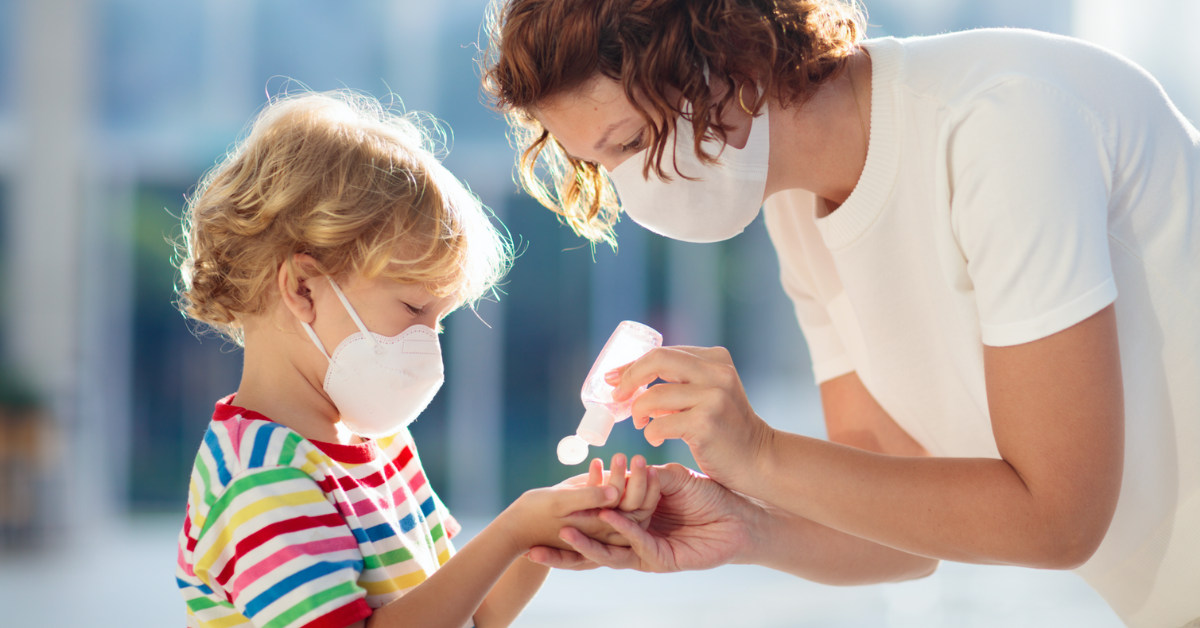
The constant barrage of coronavirus news can be anxiety-inducing. Information fills our televisions, radios and social media feeds. Taking it all in can become overwhelming. But in the Union County home of Dr. Rupal Badalyan, she and her four children pull up the World Health Organization’s website to take a look at the daily numbers of new COVID-19 cases.
“How do you think things are going?” asks Badalyan, an internal medicine doctor at Tryon Medical Partners.
After posing the question to the kids, she gives them a chance to take in the information and formulate their own opinions. “Not good,” they reply.
By focusing on facts rooted in public health and safety, Badalyan says, it puts things into perspective for her children.
“As we see numbers of cases rising, they come to understand that the precautions we take are all about the safety of ourselves and those around us,” Badalyan said. “We’re trying to keep everyone from getting sick.”
This school year, the two oldest Badalyan children will enter eighth and ninth grades, and the youngest will begin second and fourth. A combination of in-person and remote learning in Union County means they’ll need to be ready for both scenarios. But being prepared for the school year has been an ongoing effort all summer for this family headed by two healthcare professionals. Badalyan is an internal medicine doctor at Tryon Medical Partners’ Waverly office, and her husband is a pulmonologist and intensive care physician.
Badalyan is often tapped by friends for “social pediatric counseling,” so she shares how her family is handling the coronavirus pandemic. You can also find her deep in conversation with her own patients who are searching for advice.
“Part of being someone’s doctor is sharing my own personal stories and how I do things. We may not all do things the same way, but I can share ideas and things to think about,” Badalyan says. “I love that relationship aspect of my job. My patients know so much about me and we develop these common links that allow me to understand where they’re coming from.”
So in that vein of sharing, we asked Badalyan how her family will navigate the upcoming school year, from playdates to how to get kids to wear masks. Here’s what we learned:
Wearing A Mask: Practice & Repetition
“When we send our kids to school where we can’t be present to protect them, we as parents need to feel confident they know what to do. That gives us the chance to control what we can.”
That confidence for Badalyan comes from consistently seeing her children be able to model safe behavior. When they’re exposed to situations like a trip to Target or grocery shopping, they wear their masks, make sure it covers their nose and mouth and avoid touching their faces. They apply hand sanitizer once they leave and before taking their masks off. Practice and repetition are the name of the game.
“Their grandparents are older and the kids know beyond protecting ourselves, we’re protecting them,” Badalyan says. “They know we don’t want to bring the virus home.”
No Matter Where Learning Happens, Create a Routine
“Spring was an absolute fire drill,” Badalyan admits. “We were not ready and we scrambled. We didn’t have a plan.”
Suddenly bedtimes and wake-up times went out the window, and her kids’ work habits were all very different. One child procrastinated while another worked so quickly, assignments would be done at the beginning of the week.
“We’re setting ourselves up for success this time,” Badalyan said. “We’re learning from the fact that not having a schedule was very disruptive. We’re planning wake-up times, meal times and making sure we stick to it.”
The children will also have dedicated workspaces. Badalyan cringed watching her daughter hunched over her laptop while sitting on her bunk bed. Having their own spaces means they’ll be set up to be ergonomic, comfortable and distraction-free.
Get on the Same Page with Fellow Parents
Children need socialization, so Badalyan has arranged opportunities for hers to see their friends – with a certain set of rules. Rotating to keep it fair, one child at a time is allowed to have one friend over or siblings from the same family. They mostly stay outside or in an arranged room in the basement so they are able to cool off and play video games. Badalyan says her children are well aware of the rules and the family doesn’t hesitate enforcing them. In fact, it starts even before the playdate begins, between parents.
“I have very direct conversations with other parents who I’ve made an effort to get to know,” Badalyan said. “We may not hang out all together as families, but I know them well enough to know their social practices. You need to be direct and upfront and, in some cases, choose the families you can trust.”
Have a Plan for the Worst Case Scenario
“We plan to prevent the virus but we also have to plan how to protect ourselves if we do get it, Badalyan says. “We’re all going to do the best we can, but we’re in a pandemic and the harsh reality is that infections are bound to happen. It’s important for parents to think through that possibility in its entirety.”
By creating a plan, parents will have it if needed.Badalyan recommends speaking to your doctor about your plan, having options like Virtual Urgent Care available and knowing what you’ll do to get tested and quarantine.
“If our child is sick, we must all be responsible citizens and keep them at home,” Badalyan said. “We have to all be in this together. By relying on safe family practices, your community of fellow parents and your trusted physician, we’ll all have the best plan and know how to enact it.”

